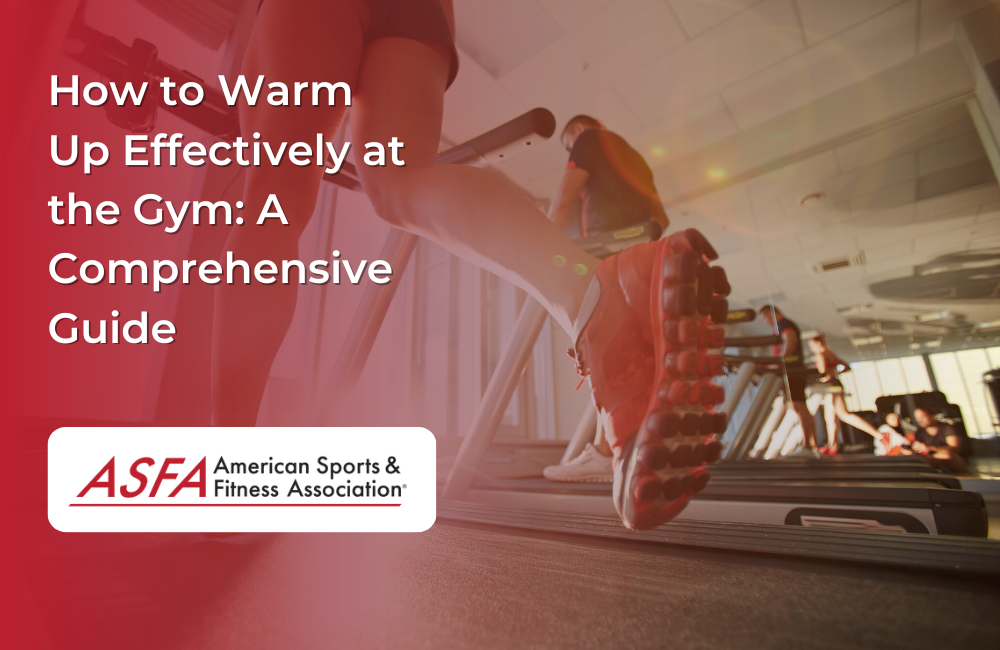Warming up before your gym workout is not just a ritual; it's a crucial part of any effective exercise routine. A proper warm-up prepares your body for more intense physical activity, reduces the risk of injury, and helps you perform at your best. In this comprehensive guide, we'll explore the importance of warming up, different types of warm-ups, and a sample warm-up routine you can use at the gym.
The Importance of Warming Up:
A well-executed warm-up offers several key benefits:
- Increased Blood Flow: Warming up gradually increases your heart rate and blood circulation, delivering more oxygen and nutrients to your muscles.
- Improved Flexibility: A warm-up includes dynamic stretching, which helps increase joint flexibility and range of motion.
- Mental Preparation: It provides a mental transition from your daily routine to your workout, helping you focus and reduce distractions.
- Injury Prevention: Warming up reduces the risk of muscle strains, joint injuries, and other workout-related injuries.
- Enhanced Performance: A proper warm-up prepares your body for the physical demands of your workout, improving overall exercise performance.
Types of Warm-Ups:
There are two main types of warm-ups: general and specific.
- General Warm-Up: This phase involves light aerobic activities to increase your heart rate and body temperature. Examples include brisk walking, jogging, or cycling for 5-10 minutes. The general warm-up prepares your entire body for exercise.
- Specific Warm-Up: After the general warm-up, you should perform specific warm-up exercises that target the muscles and movements you'll be using during your workout. This phase includes dynamic stretching, mobility drills, and light resistance exercises.
Sample Gym Warm-Up Routine:
Here's a sample warm-up routine you can follow at the gym. Adjust the duration and intensity based on your fitness level and the type of workout you'll be doing.
1. General Warm-Up (5-10 minutes):
- Brisk Walking or Light Jogging: Use a treadmill or outdoor track to walk or jog at a comfortable pace. Gradually increase your speed to raise your heart rate and break a light sweat.
- Jump Rope: If you prefer, you can use a jump rope for an effective cardio warm-up.
2. Dynamic Stretching (5-10 minutes):
Perform these dynamic stretches to improve joint mobility and flexibility:
- Arm Circles: Stand with your feet hip-width apart. Extend your arms out to the sides, and make small circles forward for 30 seconds and then backward for 30 seconds.
- Leg Swings: Stand next to a wall or sturdy surface for balance. Swing one leg forward and backward like a pendulum, gradually increasing the range of motion. Do 10-15 swings for each leg.
- Hip Circles: Stand with your hands on your hips and make circular motions with your hips. Perform 10-15 circles in each direction.
- Bodyweight Squats: Perform 10-15 bodyweight squats with proper form to warm up your lower body.
3. Specific Warm-Up (5-10 minutes):
Perform exercises that mimic the movements you'll be doing during your main workout:
- For Weightlifting: If you're doing weightlifting exercises, start with lighter weights and perform 1-2 sets of 10-12 reps for each exercise, gradually increasing the weight.
- For Cardio Workouts: If you're focusing on cardio, start with light-intensity intervals or a low-resistance setting on cardio machines, gradually increasing the intensity.
4. Mental Preparation:
Take a few moments to mentally prepare for your workout. Visualize your exercises, set goals, and remind yourself of proper form and technique.
Additional Tips for an Effective Warm-Up:
- Stay Hydrated: Begin your workout well-hydrated to prevent cramps and fatigue.
- Dress Appropriately: Wear comfortable workout attire and proper footwear to prevent injury.
- Progress Gradually: Increase the intensity and duration of your warm-up as your fitness level improves.
- Listen to Your Body: Pay attention to any discomfort or pain during your warm-up. If you feel any unusual sensations, stop and assess the situation.
- Cool Down: After your workout, take time to cool down with light stretching to reduce muscle soreness.
Remember that a proper warm-up is a critical component of your fitness routine, and skipping it can increase the risk of injury. Make it a habit to include a well-structured warm-up before every gym session to ensure a safe and effective workout.





